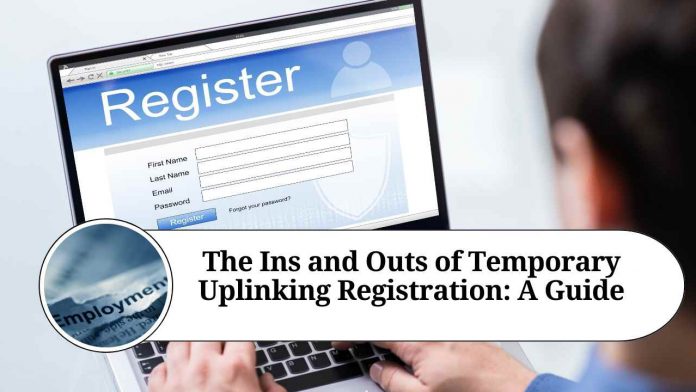Introduction
In today’s fast-paced digital world, the need for instant connectivity and real-time communication is more vital than ever. Temporary uplinking, also known as satellite uplinking, plays a significant role in facilitating live broadcasts, remote events, news reporting, and emergency communication. To ensure smooth operations and proper management of uplinking activities, temporary uplinking registration is a crucial process. In this blog, we will explore the ins and outs of temporary uplinking registration, its significance, and the steps involved.
Understanding Temporary Uplinking
Temporary uplinking refers to the process of transmitting signals from a local source to a satellite for further distribution. It enables the delivery of video, audio, and data signals to a wide range of recipients, including broadcasters, network operators, and content providers. Temporary uplinking is commonly employed for broadcasting live events, such as sports tournaments, news coverage, concerts, and corporate conferences.
Significance of Temporary Uplinking Registration
Temporary uplinking registration serves as a regulatory measure to ensure efficient use of satellite resources and to avoid interference with other satellite transmissions. By registering the temporary uplinking activity, regulatory authorities can manage frequency allocation, minimize signal interference, and maintain overall spectrum integrity. It allows different stakeholders to coordinate their operations and optimize satellite capacity for a smooth broadcasting experience.
The Registration Process
- Identifying the Need: The first step in temporary uplinking registration is to determine the necessity of the uplink. Organizations or individuals must assess whether their specific event or communication requires temporary uplinking. This could include factors such as the nature of the event, location, duration, and technical requirements.
- Contacting Regulatory Authorities: Once the need for temporary uplinking is established, the next step involves reaching out to the appropriate regulatory authorities responsible for managing satellite operations. These authorities may vary depending on the country or region, so it is essential to identify the correct authority and understand their specific registration requirements.
- Gathering Necessary Information: The registration process typically requires providing comprehensive information about the uplinking activity. This may include details such as event date and time, event location, uplink frequency band, satellite parameters, and technical specifications. Additionally, the applicant may need to submit supporting documents, such as event permits or licenses.
- Submitting the Application: After gathering all the required information, the applicant must submit the registration application to the regulatory authority within the specified timeframe. The application may be submitted online or through other designated channels as prescribed by the authority.
- Coordination and Approval: Once the application is received, the regulatory authority will review the request and assess its compatibility with existing satellite operations. They will evaluate factors such as potential interference and availability of satellite resources. Upon successful coordination, the authority will grant the necessary approval for temporary uplinking.
- Compliance and Monitoring: Following approval, the registrant must adhere to the guidelines and conditions set by the regulatory authority. This may involve using the allocated frequency band, adhering to power limitations, and ensuring interference-free operation. Compliance may be monitored during the event to ensure adherence to regulations.
Conclusion
Temporary uplinking registration is a vital process that enables efficient use of satellite resources and prevents signal interference during live broadcasts and remote events. By following the necessary steps and working closely with regulatory authorities, organizations and individuals can ensure a seamless uplinking experience while maintaining compliance with the established guidelines. As technology continues to evolve, temporary uplinking registration will remain an essential aspect of ensuring reliable and interference-free satellite communication.
Other Related Blogs: Section 144B Income Tax Act
Frequently Asked Questions (FAQs)
Q1: What is temporary uplinking registration?
Temporary uplinking registration is the process of obtaining approval from regulatory authorities to transmit signals from a local source to a satellite for broadcasting or communication purposes. It involves providing relevant information about the uplinking activity to ensure efficient use of satellite resources and prevent interference with other satellite transmissions.
Q2: Why is temporary uplinking registration necessary?
Temporary uplinking registration is necessary to manage frequency allocation, prevent signal interference, and maintain the overall integrity of the satellite spectrum. By registering the uplinking activity, regulatory authorities can coordinate different users, optimize satellite capacity, and ensure a smooth broadcasting experience.
Q3: Who needs to register for temporary uplinking?
Any organization or individual planning to transmit signals via satellite for live broadcasts, remote events, news coverage, emergency communication, or other similar purposes typically needs to register for temporary uplinking. This includes broadcasters, network operators, content providers, and event organizers.
Q4: How do I find the appropriate regulatory authority for temporary uplinking registration?
The regulatory authority responsible for managing temporary uplinking may vary depending on the country or region. To find the appropriate authority, you can search for the telecommunications or broadcasting regulatory agency in your country or consult industry professionals who are familiar with the local regulations.
Q5: What information is required for temporary uplinking registration?
The information required for temporary uplinking registration may include event date and time, event location, uplink frequency band, satellite parameters, technical specifications, and supporting documents such as event permits or licenses. The exact requirements may vary depending on the regulatory authority.
Q6: How do I submit the temporary uplinking registration application?
The submission process for temporary uplinking registration varies depending on the regulatory authority. Some authorities may have online portals where you can submit the application electronically, while others may require physical documents to be submitted through designated channels. It is important to follow the instructions provided by the regulatory authority.




















